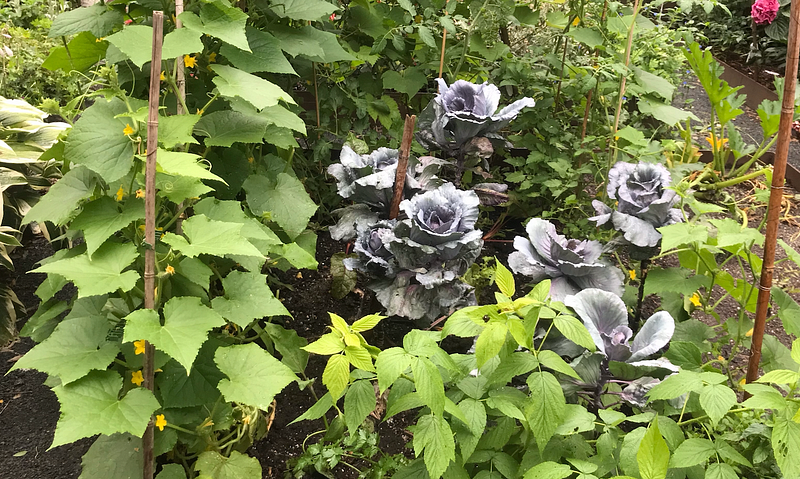Navigating the Beautiful Chaos of the Summer Garden
Written on
Chapter 1: The Order of Spring
For many gardeners, spring represents a time of structure and meticulous planning. Gardeners often refer to moon phases and sunrise schedules to optimize their planting. Seeds are methodically arranged in tidy rows, and as the soil warms, vibrant greens sprout in accordance with the envisioned layout. You feel like the ruler of your small realm, confidently dictating, “This spot is for lettuce, that area is designated for kale, and these cucumbers will climb the perimeter.” Each plant is assigned its own space, obediently catering to your carefully crafted design.
But nature often has its own agenda.
As summer unfolds, seasoned gardeners quickly realize that the garden can resemble a wild jungle. Each plant vies for sunlight, fiercely competing for its share of energy. For instance, a cucumber might abandon trellises and instead scale the stem of a towering tomato plant in a bid to become the ultimate shade provider. The well-known trio of corn, beans, and squash morph into a fierce competition reminiscent of the characters from King Lear, with each plant ruthlessly pursuing nutrients while potentially overshadowing the weaker ones.
So, how should you respond to this unruly environment?
It's beneficial to reflect on the lessons from King Lear and recognize what aspects of your garden are within your control. You can trim back overzealous growth and offer opportunities to underperformers, striving for a balanced ecosystem. However, if you’re hoping for a bountiful harvest, it may be wise to adopt a “survival of the fittest” mentality. Allow thriving plants to flourish, even if that means forgoing certain crops this season.
Additionally, it's crucial to differentiate between plants that are merely growing well and those that are yielding a substantial harvest. Tomatoes, for instance, can be dramatic in their growth, often towering over us, yet how many fruits are they actually producing? Keep a record of your harvests; over time, if certain showy plants prove unworthy of their space, it may be time to let them go. Similarly, if any plant is struggling due to disease or other issues, don’t hesitate to remove it from your garden.
As July and August bring an overwhelming sense of chaos, remember that this too shall pass. Days will shorten, temperatures will drop, and soon, the summer's vibrancy will fade as you transition into fall. Surprisingly, mid-summer is an opportune time to start sowing seeds for cooler weather crops. Lettuces, peas, and spinach can germinate in the warm summer air, so consider bringing them indoors if the heat becomes excessive.
Then, be patient. When the dominant summer crops begin to decline, seize that opportunity.
Invite the cool-season plants to take over the garden.

Chapter 2: Embracing the Chaos
In the first video, "NOT Perfect, PURE Chaos (September Garden Tour)," we delve into the unpredictable and wild beauty of summer gardens, showcasing how nature often defies our expectations.
The second video, "September 2024 Backyard Garden Tour - The Final Stretch Of The Summer Garden," takes viewers on a journey through the final days of summer gardening, highlighting the adjustments needed as we transition into fall.